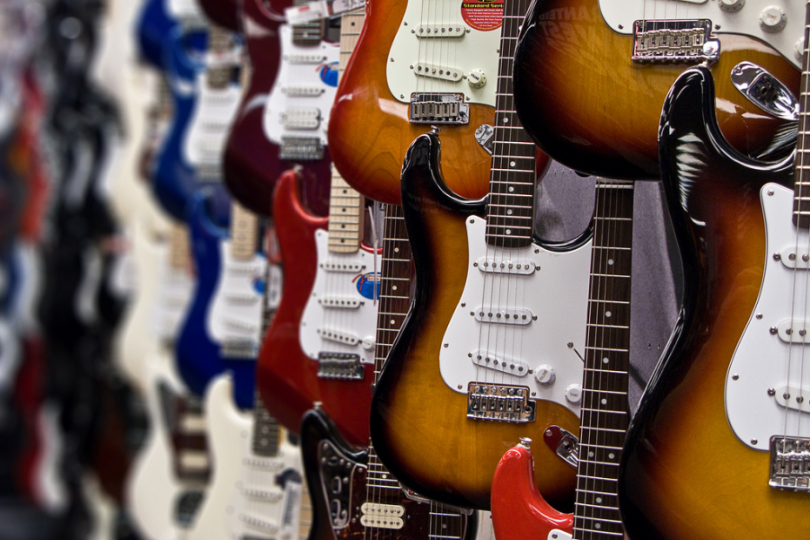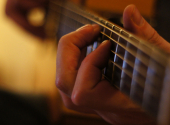
How to Choose Your First Guitar?
Over the course of the 20th century, the guitar became possibly the most popular musical instrument of all time. Not surprisingly, many different types have been created. As a result, a beginner can be overwhelmed by the information available when choosing his or her first guitar. This article will help you get your bearings.
Guitar for beginners and first questions
Electric or acoustic guitar? And steel or nylon strings? These are the first questions you need to answer when choosing an instrument. It all depends on what genre of music one wants to play. Although there are still advocates of the notion that "everyone should start out on a classical guitar," I can't think of a single rational reason to back that up. On the contrary, given the differences in technique of playing different types of guitars, the fastest way to learn to play the music that interests you is on the instrument designed for it.
So, I recommend choosing the type of guitar based on what kind of music you listen to and would ideally like to play. The right instrument is a huge motivator to practice. If you have some favorite guitarists, it's not a bad idea at all to take into account what they play while selecting an instrument. You will probably have similar tastes.
Classical guitar
Classical guitars designed for use with nylon strings (popularly called "Spanish") are historically the oldest. They are tailored to a specific style of playing, with a wider neck and strings further apart. This is because they are generally played with the fingers rather than a pick. Because of this (and the specific sound of the nylon strings), the classical guitar is mainly used in classical music, flamenco and occasionally pop. Classical guitar played with a pick can on rare occasions be found in jazz.
When buying a classical guitar, there are a few key differences to consider. They are constructed for nylon strings, which have much less tension, and if you would put steel strings on it, you risk damaging or even destroying the instrument. Synthetic strings, on the other hand, are much easier to pluck, making them more comfortable to play even for the smallest children. However, the sound is not as piercing and ringing and acoustic guitars with steel strings are better suited for campfires, for example.
Acoustic guitar
The acoustic guitar designed for use with steel strings (western, dreadnought, jumbo, etc.) is an instrument used much more frequently in contemporary music. Thanks to its sharp and ringing sound, it has found many advocates among folk (as it is an indispensable item around the campfire), country and blues players. In addition, it is also widely used in pop and classic rock. Moreover, a relatively new style of acoustic guitar playing is now catching on, combining traditional guitar playing with its percussive use.
As with the classical guitar, the western guitar must be considered as a guitar that cannot be played with strings other than those designed for it. In this case, the problem is not the tension, but the fact that there is nowhere to tie the strings, as acoustic guitars have a different bridge.
Electric guitar
The sound range of electric guitars is really broad. From the harsh distorted sounds used in metal to the soft round tones of jazz, everything can be drawn from a single instrument. But you have to take into account the character of the instrument.
Apart from the guitar, you need to get some sort of amplifier, as an unplugged guitar is very quiet. So we can't play in the open air. Also, sound-wise it is more of a band instrument, rather unsuitable for solo performance (with a few exceptions). On the other hand, the electric guitar can be played very quietly and should not be a problem. The possibility to control the volume is a huge advantage, e.g. in an apartment building.
How to choose the size of the guitar or children's guitars
Let's say we have already chosen the type of guitar. If the guitar is for a smaller child, then size needs to be considered as well. Apart from standard adult guitars, smaller children's guitars are also produced. 1/4, 1/2 or 3/4 guitars are common. Although each category is designed for a certain age, this is more of a guideline.
The determining factor is the size of the hands. It is definitely not worth saving money and buying a bigger guitar thinking that „they'll grow into it“. Too much distance between the frets makes it much more difficult to play. This can frustrate a child to the point that they lose the desire to play altogether. In addition, it fosters bad playing habits, especially hand cramps. These not only impede play and make it impossible to play well in the future, but can also lead to health problems. Choosing the right size guitar for a smaller child is therefore quite crucial.
In general, a beginner's guitar should be easy to play and easy to tune. This is because we cultivate and develop a (relative) musical ear when we play. If we learn to play on an instrument that is out of tune, it can have a detrimental effect on our musical hearing. So it's a good idea to visit a shop with someone who knows at least a little bit about guitars and who, most importantly, has a musical ear. A future guitar teacher, for example, may be the ideal person to talk to.
With electric guitars for children, you should take into account that they are mostly played standing up. Apart from size, weight is also a big factor. You can also find children's guitars on the market that are noticeably lighter for these reasons. This avoids a lot of back problems.
What type of guitar are you thinking of buying? Let us know in the comments below.
If you have found an error or typo in the article, please let us know by e-mail info@insounder.org.




